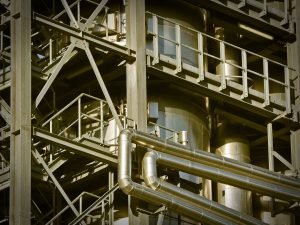 Are you manufacturing products for the chemical, nutrition, food or bakery sector? In these sectors, the manufacturers, which includes you, need to blend a variety of powdered and liquid ingredients in equipment such as industrial mixers and water barrel pump electric. In most such cases, the most important part of the whole process is blending as that adds a lot of value. There is also the risk of an allergen being present when you use a wide range of ingredients in your recipes. Most manufacturers are willing to spend huge amounts of money to get their hands on higher speed packing lines and mixers but there is absolutely no guarantee that they will get an efficient solution or a good return on their investment in the long term.
Are you manufacturing products for the chemical, nutrition, food or bakery sector? In these sectors, the manufacturers, which includes you, need to blend a variety of powdered and liquid ingredients in equipment such as industrial mixers and water barrel pump electric. In most such cases, the most important part of the whole process is blending as that adds a lot of value. There is also the risk of an allergen being present when you use a wide range of ingredients in your recipes. Most manufacturers are willing to spend huge amounts of money to get their hands on higher speed packing lines and mixers but there is absolutely no guarantee that they will get an efficient solution or a good return on their investment in the long term.
What kind of products are you currently manufacturing?
In case you need to make only one recipe in large volumes and that recipe doesn’t need to be changed often, you could do that with a fixed mixer that is joined to the downstream and upstream processes. However, many manufacturers are discovering that their customers want variety in recipes which means they need to make changes to the process quickly and efficiently. If that is the case and you are required to change recipes often with different ingredients, the most efficient way for you to manufacturing is batch processing.
Powder Properties
If the recipe you are manufacturing involves use of free-flowing powders that are similar in particle size, you could use a gentle blending program. In such cases, it is recommended to use either a ribbon blender or a tumble blender for the most efficient processing.
Batch Size
Big blunders with capability of processing huge volumes offer the advantage of accommodating a bigger order size but you also need to take into account the increased time taken for loading and cleaning. You need to take into consideration the time it will take to rip apart and fill in a number of sacks into the blender. Don’t forget to take into account the time required for cleaning as well as for discharging the mixed product onto the packing line. When workers are loading, emptying or cleaning the mixer, it’s not being used which means there is a lot of downtime.
Time Taken for Mixing
One of the biggest problems is the misleading blend time. Even if the mixer is able to blend the ingredients in 4 minutes, it does not mean that’s the real mixing time. You need to take into account all the processes including filling, packing, cleaning as well as blending. You need to calculate the true mixing time by accounting for all the processes involved and the time it takes for you to ready the mixer for processing the next batch. That might involve 2 hours for loading and 3 hours for packing.
Cross Contamination Risk
The risk of cross contamination increases with the increase in number of ingredients used in various recipes. It is not easy for manufacturers to change the recipe and to ensure that cleaning is done efficiently and effectively. When the in-line conveyance systems and fixed mixers are joined together, cleaning takes a long time and you also have to validate the cleaning of all the parts before starting the next batch.
Tips for Blending Powders
Time required for cleaning the equipment can be reduced.
If the blending process can be made more efficient, it will result in increased output as more batches can be done in one shift.
Save money by reducing the number of workers required for cleaning by using a tumble blender.
The integral cone valve technology used in Mat-con IBCs ensures that containers are completely empty at the end of the process.
You can make a whole range of recipes in different batch sizes efficiently.